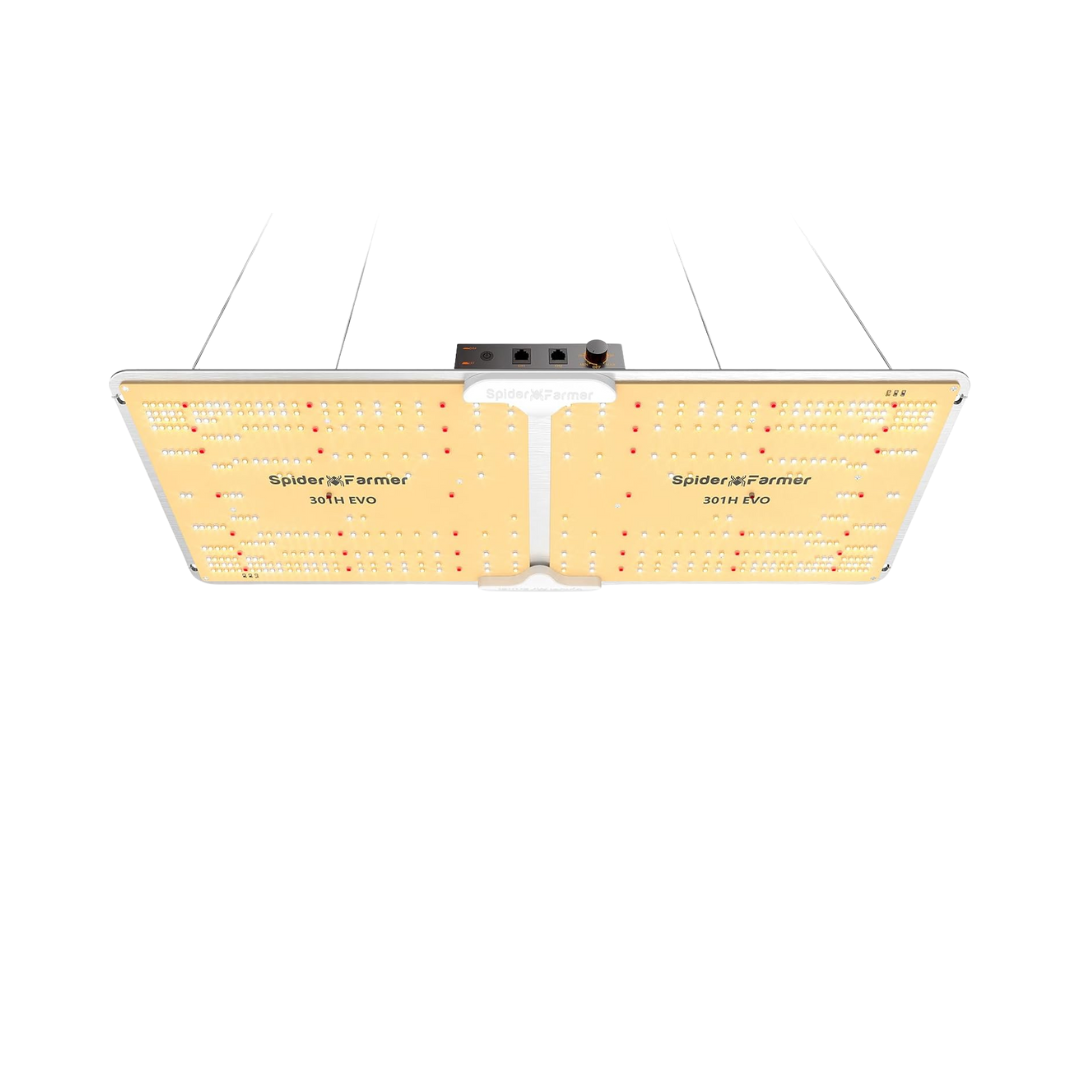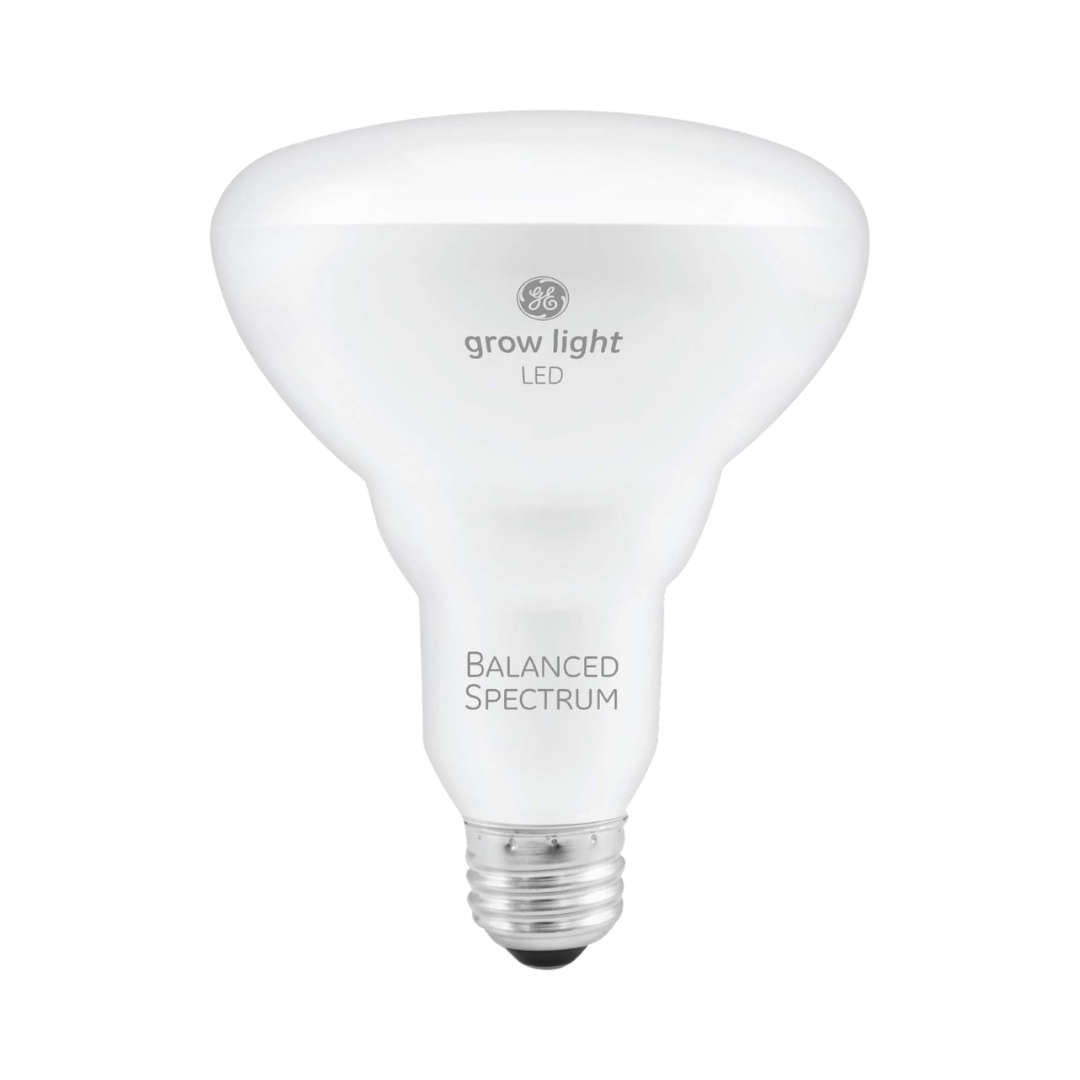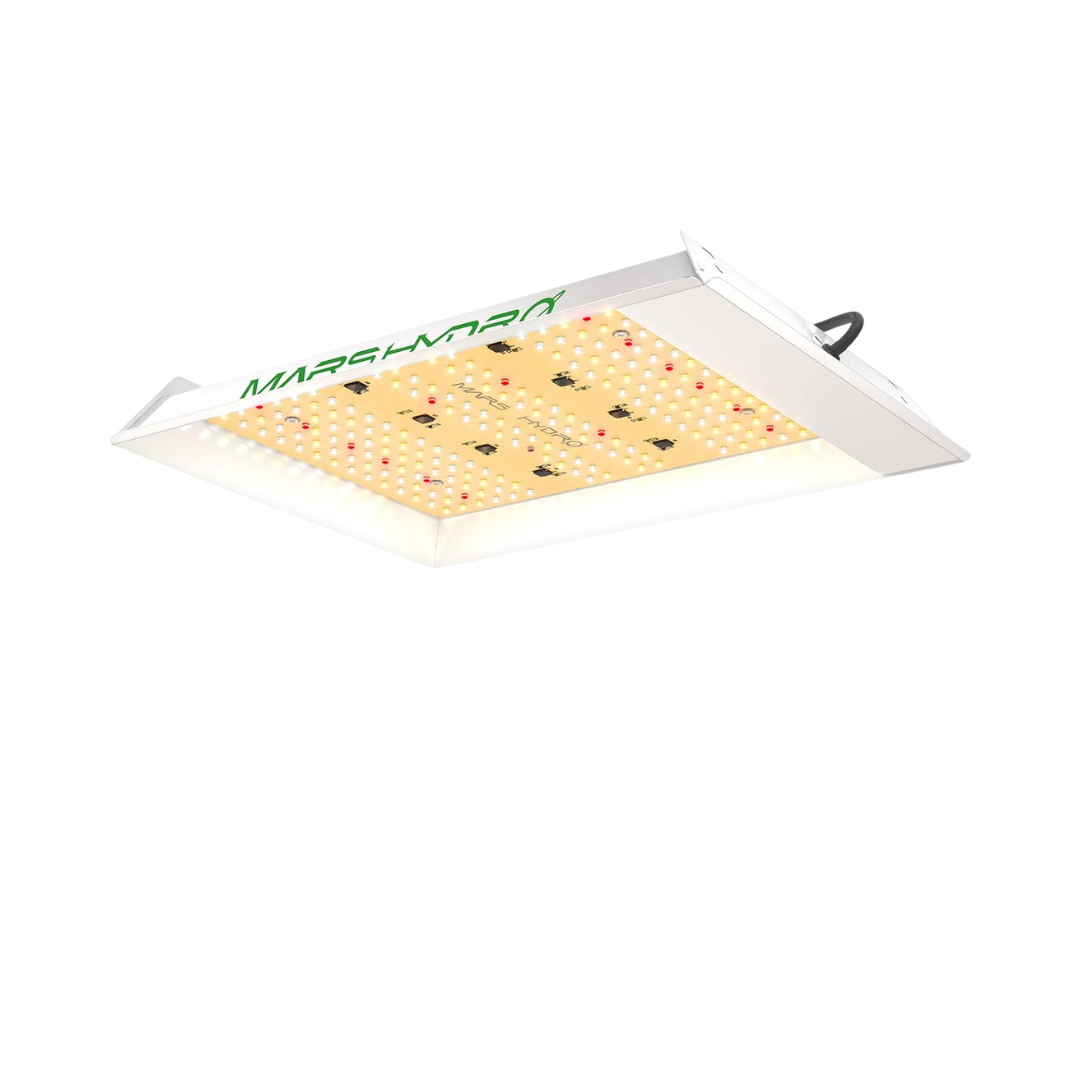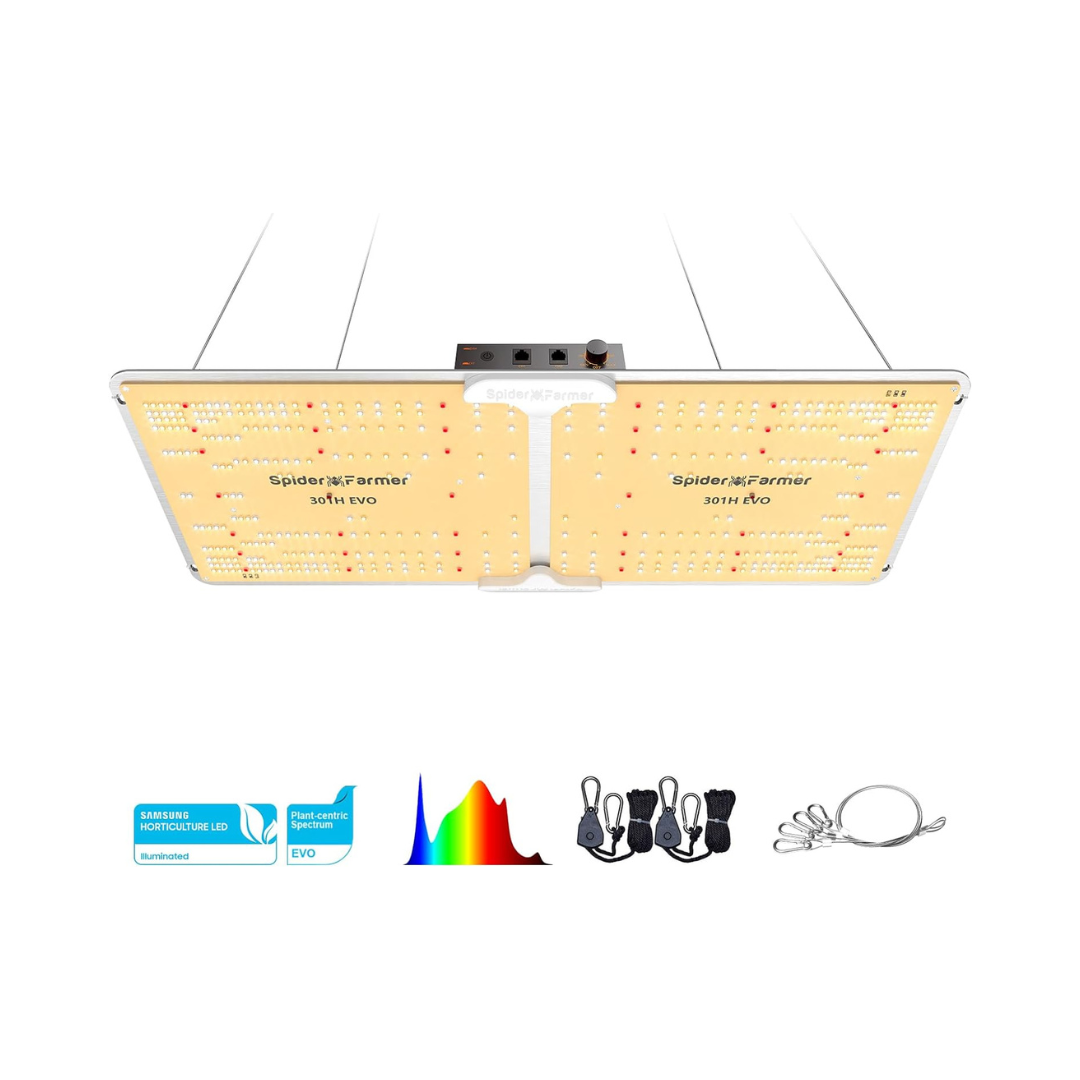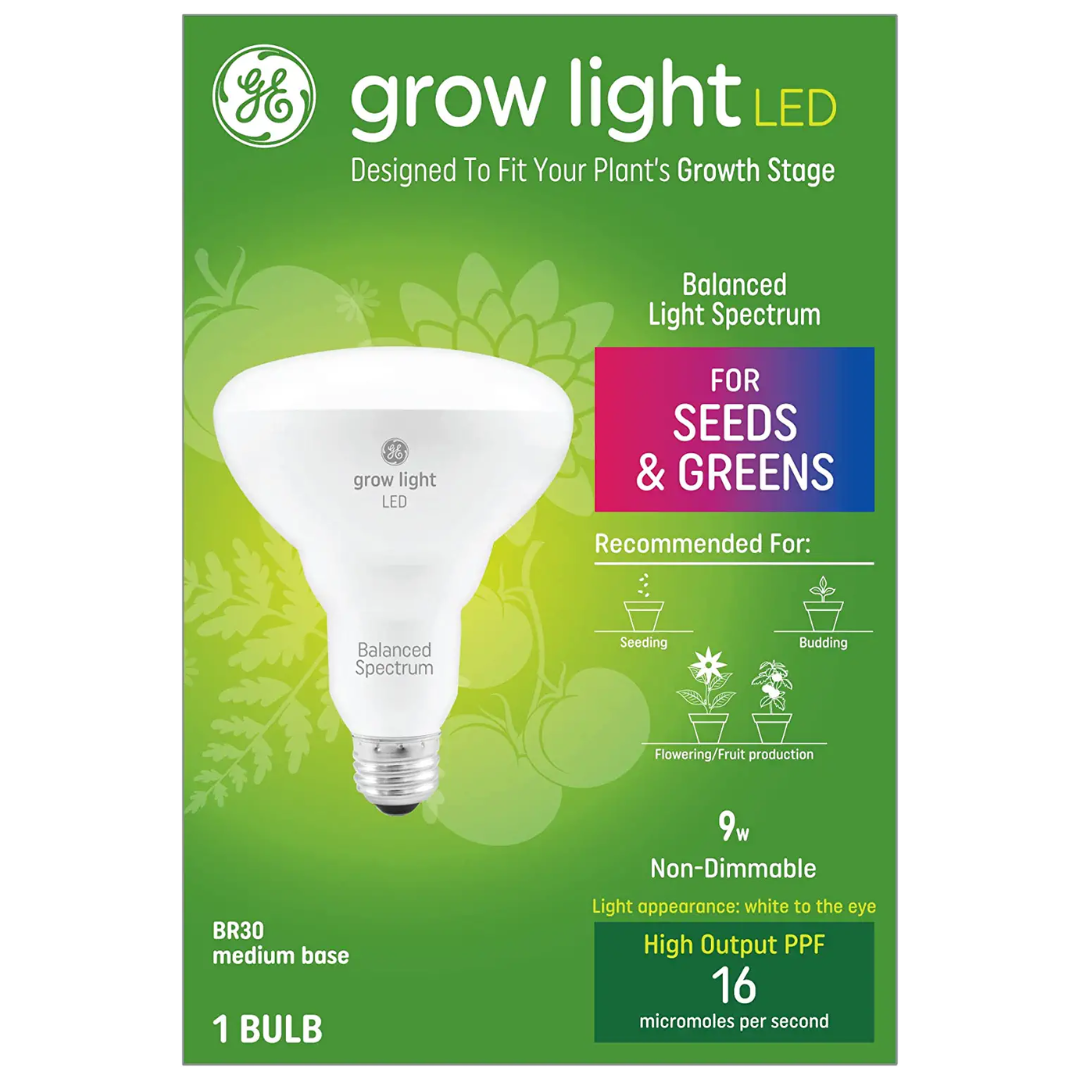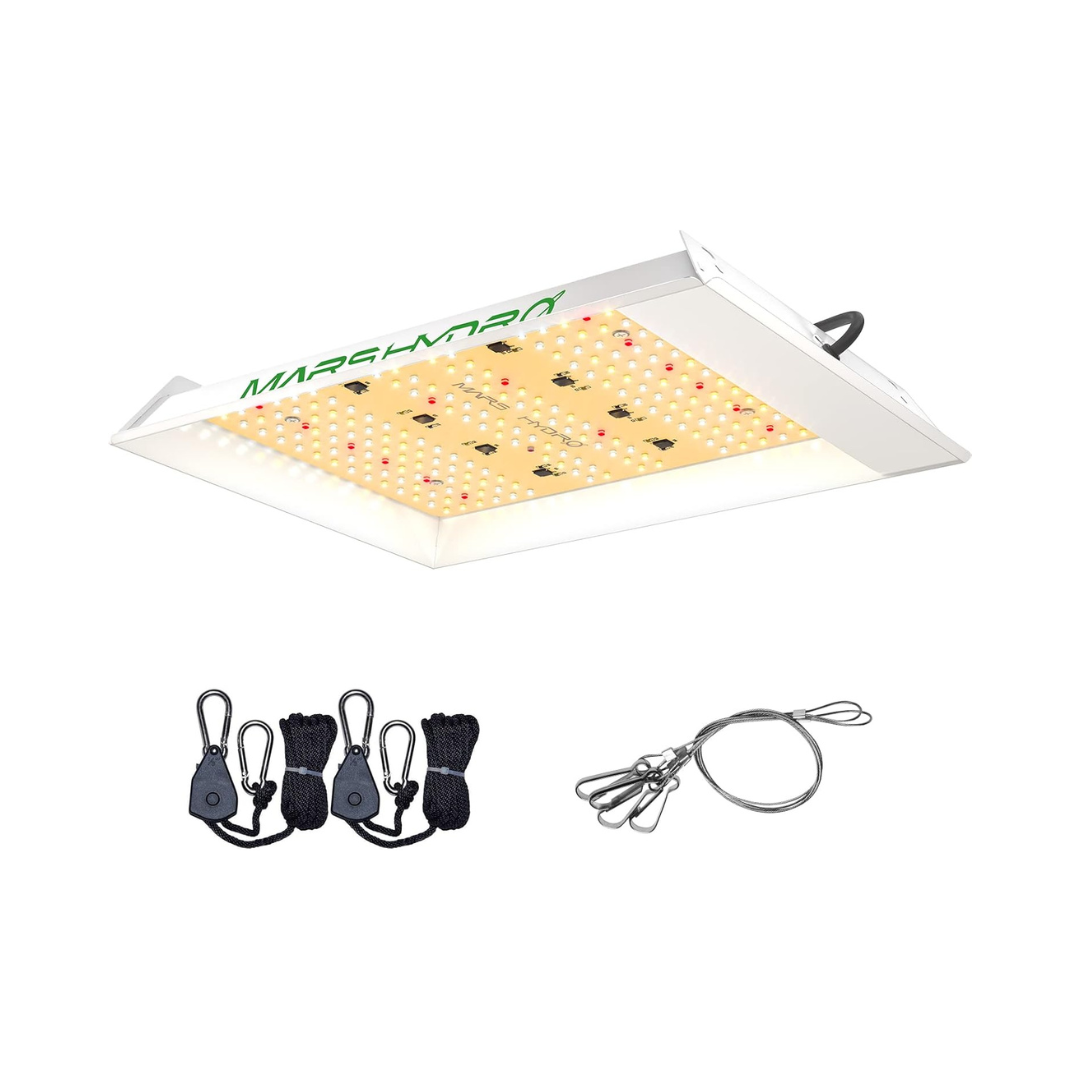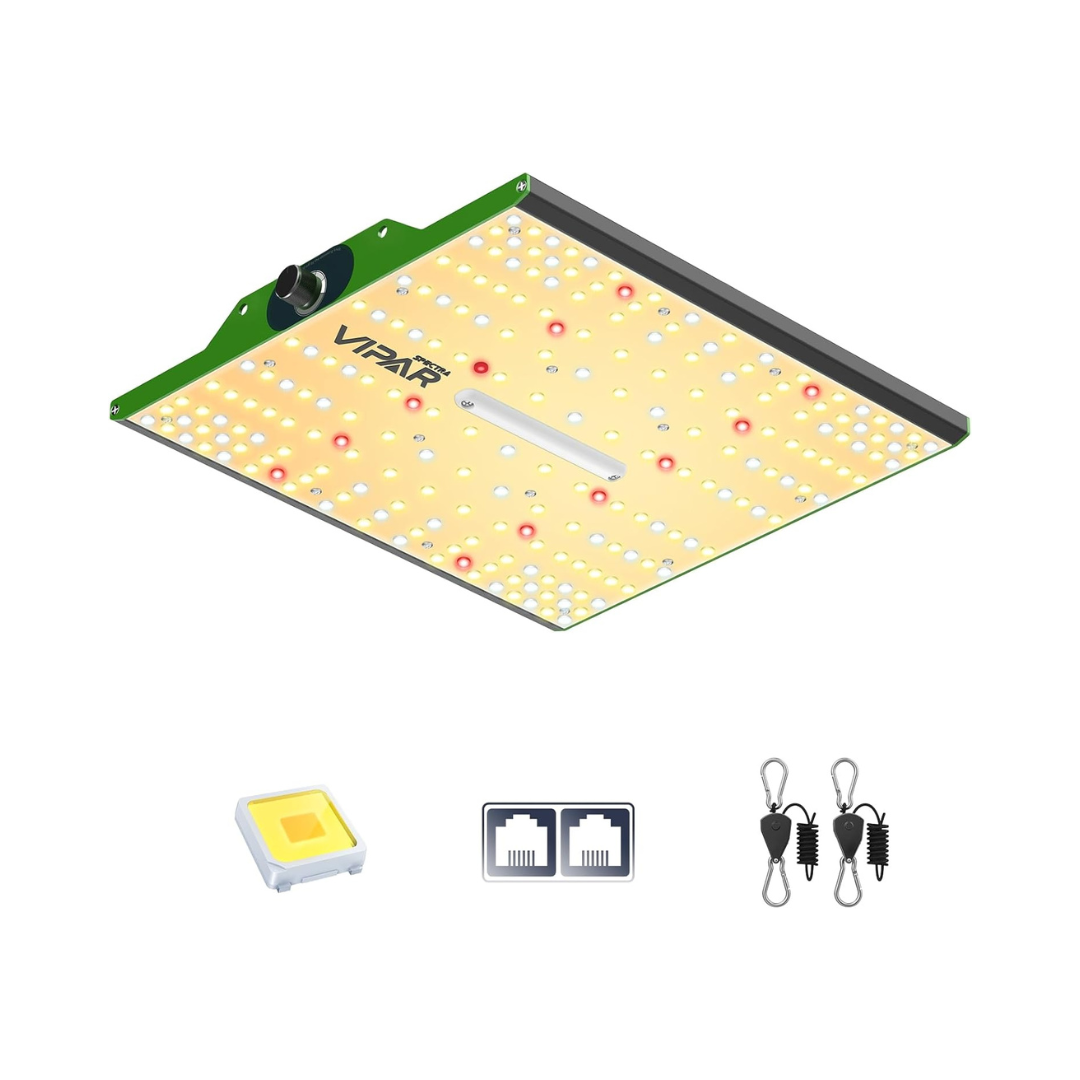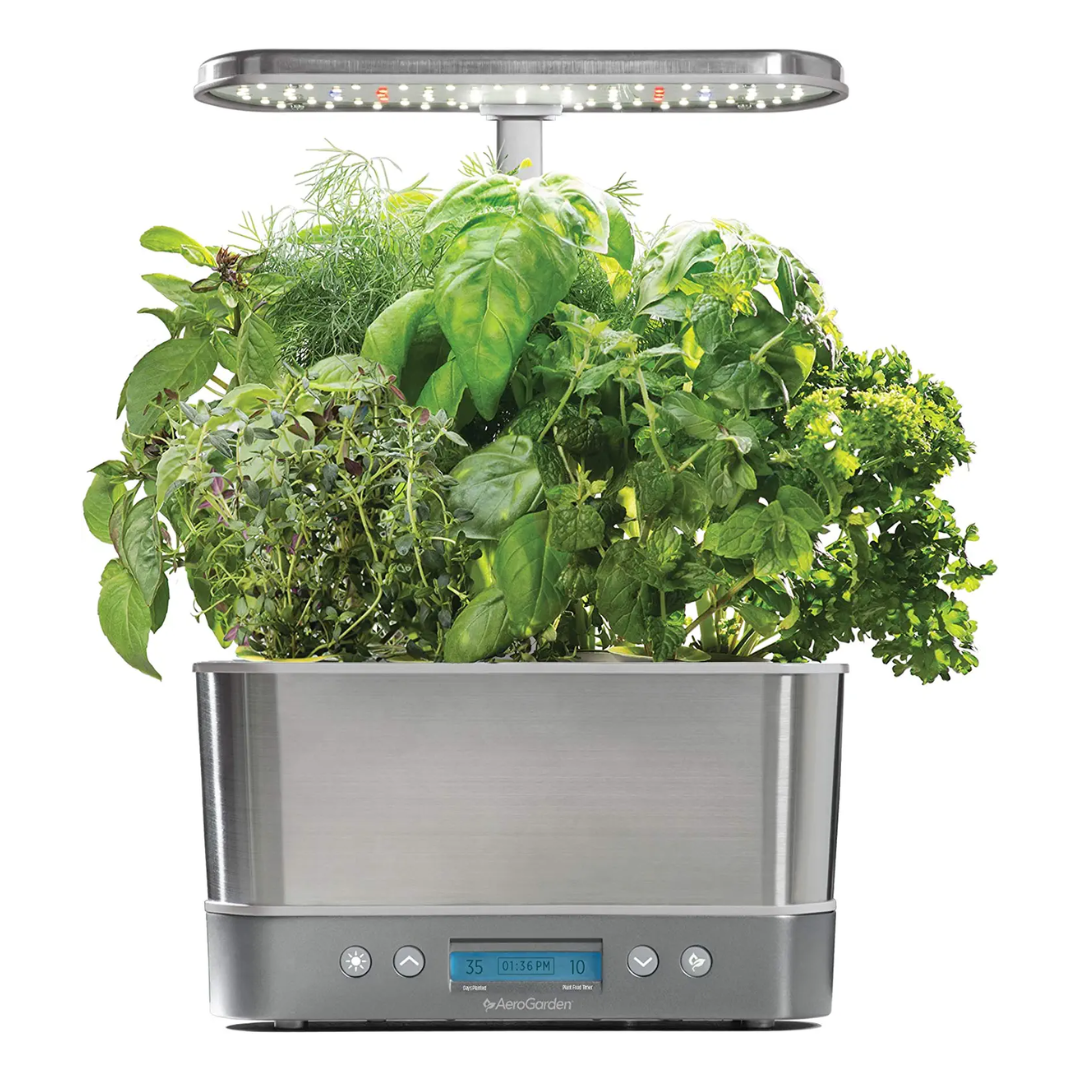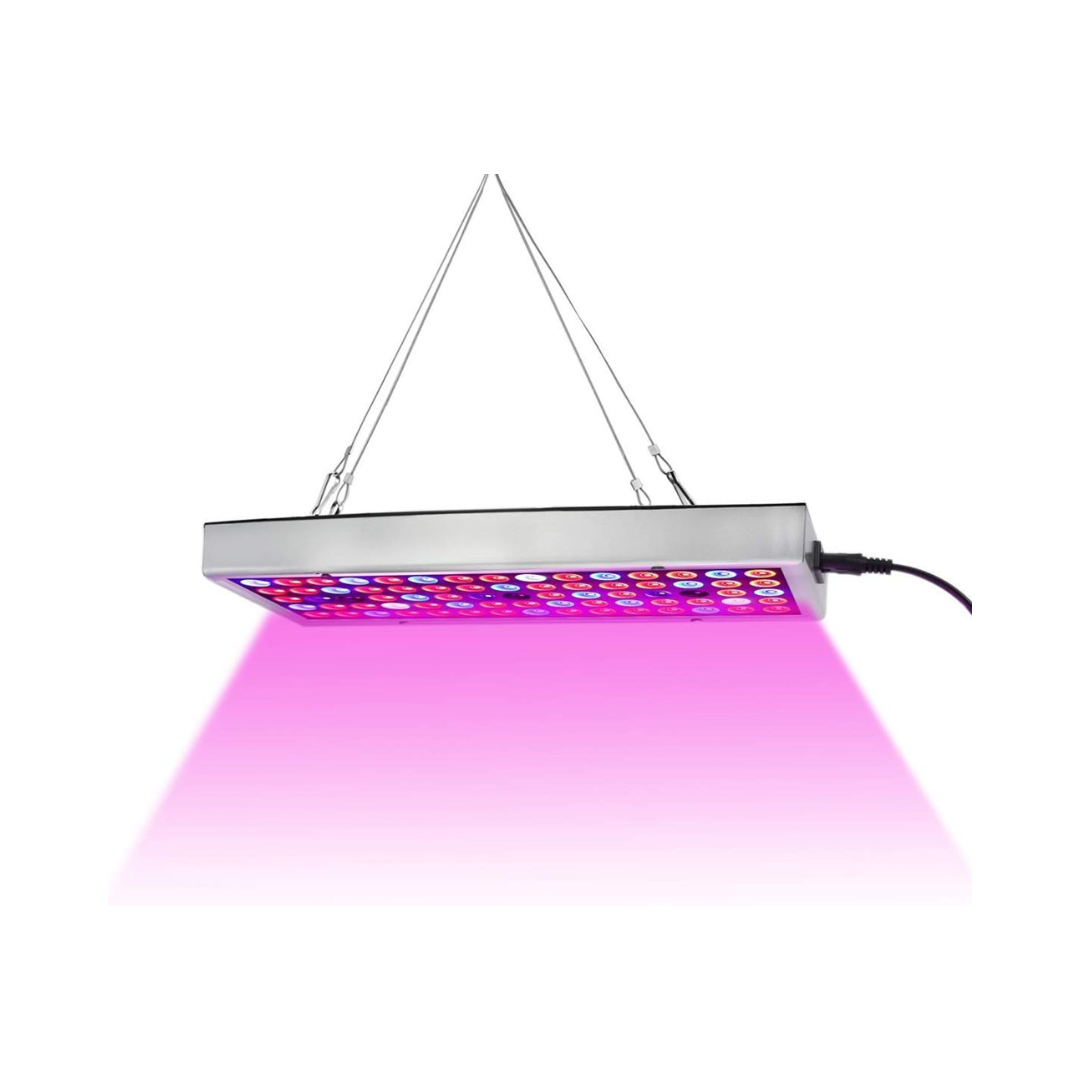We may be compensated if you purchase through links on our website. Our team is committed to delivering honest, objective, and independent reviews on home products and services.
Grow lights are a great solution for indoor gardening, especially when natural sunlight is limited. Whether you’re starting seeds or caring for houseplants, the right amount of light can boost plant growth. We reviewed the best grow lights to help you choose the ideal one. Read on to find the best choice for your plant-growing needs.
8 Best Grow Lights (2024 Review)
- Best Overall: Spider Farmer SF-2000 LED Grow Light
- Best Bulb Light: GE Lighting Grow Light Bulb
- Best Kit: MARS HYDRO LED Grow Light
- Best Linkable Light: Barrina Grow Lights
- Best for Small Areas: VIPARSPECTRA P1000 LED Grow Light
- Best Garden Light: AeroGarden Indoor Garden With Grow Light
- Best Floor Light: GHodec Four-Head Grow Light
- Best Value: Juhefa LED Grow Lights
Compare Top Grow Lights
| Product | Wattage | Ligh Color | Type |
|---|---|---|---|
| Spider Farmer SF-2000 LED Grow Light | 200 watts total | White | Ceiling |
| GE Lighting Grow Light Bulb | 9 watts per bulb | White | Bulb |
| MARS HYDRO LED Grow Light | 100 watts total | White | Ceiling |
| Barrina Grow Lights | 5 watts per bulb | White | Indoor |
| Spider Farmer SF-4000 LED Grow Light | 450 watts total | White | Ceiling |
| VIPARSPECTRA P1000 LED Grow Light | 1,000 watts total | White | Ceiling |
| AeroGarden Indoor Garden With Grow Light | 20 watts total | White | Plant pot |
| GHodec Four-Head Grow Light | 100 watts toal | White | Gooseneck |
| Juhefa LED Grow Lights | 25 watts otal | Pink | Ceiling |
| Product | Wattage | Ligh Color | Type |
Best Overall
Pros and Cons
✔ Offers full-spectrum lighting, including red, blue, and white
✔ Is made of durable materials that won’t leak heat
✔ Includes three years of after-service maintenance in some countries
✘ Is more expensive than some other grow lights on the market
✘ Does not have a built-in fan
What Customers Are Saying
Our team learned that customers liked this grow light’s full-spectrum quantum board, low power consumption, and simple but polished design. However, some customers also said it wasn’t worth the expensive price.
Best Bulb Light
Pros and Cons
✔ Uses only nine watts of energy with low heat generation
✔ Doesn’t disrupt your decor scheme, as it looks like a regular light bulb
✔ Works with both high- and low-light plants during any growth stage
✘ Not meant to grow flowers or fruits
✘ Requires a separate purchase for a fixture or lamp
What Customers Are Saying
Customers appreciated how bright this bulb was given its low energy consumption. They also said that it effectively grew a variety of plants. However, frustrated customers said that it died quickly and made an irritating buzzing noise when it was on.
Best Kit
Pros and Cons
✔ Has a reflective design that maximizes light
✔ Offers sun-like full-spectrum lighting to help with all stages of growth
✔ Has low energy consumption at 150 watts with 354 LEDs
✘ Doesn’t feature a waterproof power cord interface
✘ Comes with only one ratchet hanger, making it challenging to hang
What Customers Are Saying
Our team found that customers liked this product because of its efficiency and daisy-chain functionality. On the other hand, a common complaint among dissatisfied customers was that the instructions manual was difficult to follow, making assembly and usage complicated.
Best Linkable Light
Pros and Cons
✔ Can control each tube together or separately
✔ Can link up to eight more tubes to the eight in this pack
✔ Comes with different types of hardware to suit any mounting method
✘ May not be necessary for those who have only a few plants
✘ Requires a lot of assembly
What Customers Are Saying
When they were installed together, these lights provided bright light for customers’ gardens. Users also liked that they could grow practically any plant with them. Negative reviews said that the light skewed pink rather than the advertised white. Other users claimed that the wiring shocked them.
Best for Small Areas
Pros and Cons
✔ Is a full spectrum grow light, so it provides light for plants in all stages of growth
✔ Does not require installation
✔ Has a daisy chain feature that allows you to connect up to 20 pieces
✘ Driver is difficult to remove
✘ Some customers felt it wasn’t bright enough
What Customers Are Saying
Many of the customer reviews we found praised this set’s adjustable temperature, the daisy chain feature, and the ample coverage area. However, some felt it lacked brightness, and some were disappointed in its lack of an on/off switch.
Best Garden Light
Pros and Cons
✔ Has enough plant food in the pods for an entire growing season
✔ Comes with a digital control panel
✔ Can raise and lower the light
✘ Can’t grow plants that are over 12 inches tall
✘ Can only grow up to six plants at a time
What Customers Are Saying
Customers who left positive reviews for this indoor garden said that it was both decorative and functional, as it had a sleek, stylish design and grew healthy plants quickly. However, customers who left negative reviews struggled with the digital display. They also didn’t like that the built-in light limited how tall the plants could grow.
Best Floor Light
Pros and Cons
✔ Includes four-, eight-, and 12-hour timer options
✔ Has a strong steel andaluminum bracket that dissipates heat quickly
✔ Offers five brightness settings
✘ Doesn’t offer blue light, which helps grow healthy leaves and stems
✘ Has a short five-foot power cord
What Customers Are Saying
Customers thought that this light was easy to use, especially with the built-in control panel on the power cord. They also liked that it was lightweight in case they needed to adjust its placement. Meanwhile, some customers didn’t like this light, stating that it wasn’t bright enough.
Bes Value
Pros and Cons
✔ Has a combination of light colors that produce different effects on plants
✔ Has full spectrum capabilities
✔ Includes a steel hanging kit and a power cord
✘ Offers less coverage than some other models
✘ Does not have an on/off switch
What Customers Are Saying
We learned that satisfied customers were pleased with the growth of their plants under these lights, while others we noted were impressed with its lightweight and compact design. However, others who didn’t care for this product said that it had less coverage than they were expecting, and we also saw others that were frustrated with its lack of an on/off switch, meaning it has to be plugged in/out of an outlet to turn the device on or off.
Buying Guide for Grow Lights
To make an informed purchase about what grow light works best for your gardening needs, consider the following factors.
Grow Light Coverage
Grow lights typically give you measurements for how much vegetative and flowering coverage they offer. Be sure to choose a light that matches the amount of light and type of coverage you need for your indoor growing area, grow tent, or plant wall.
Light
Different plant species and growth stages require different colors and temperatures of light. Warm light helps with fruit and flower production. Cool light, meanwhile, helps seeds grow stems and leaves and greens expand their foliage.
If you have both flowering and leafy plants or don’t know which type of light your plants need, you can find full-spectrum grow lights. These provide a balance of warm and cool lighting to resemble natural sunlight.
Bulb
Most grow lights on the market today use LED bulbs. LED lights are long-lasting and energy-efficient. They also come in different colors and temperatures to suit your lighting needs. These bulbs have almost entirely replaced fluorescent and HID ones.
Fluorescent bulbs are useful for growing plants that require a modest amount of light. However, because their output is fairly weak, you have to put them a few inches from your plants. Though HID bulbs are powerful, even more so than LED ones, they are expensive and energy-inefficient and require special fixtures.
Wattage
A grow light’s wattage determines how many lumens of light it produces in your grow room. Different plants require different amounts of light, so don’t just choose the light with the highest wattage to ensure optimal plant growth. Instead, match the wattage to the plants you’re growing. For example, if you’re growing tomatoes, choose a grower that offers about 32 watts of light per square foot.
Adjustability
Several features of your LED grow light should be adjustable.
- Brightness: In addition to color adjustability, LED growers usually have knobs for adjusting the brightness of their light bulbs to ensure optimal light intensity.
- Color: Plants need a different color light for every step of their growing cycle. The best grow lights offer red lights, blue lights, and white light color options.
- Proximity: You can also adjust how close the lights are to your plants by lengthening or shortening the rope or chain they’re hanging from.
Other Ways To Help Indoor Plants Grow
LED grow lights are a great way to help indoor, clean-air plants grow, but there are various other ways to help your indoor plants reach their full potential. Here are important steps our team found that you can take to help your houseplants grow and increase their versatility.
Be Aware of Light Conditions
While LED grow lights help, try buying plants that most closely match the light situation in your household. For example, if you have small windows or little natural light, focus more on plants that can thrive with minimal sunlight. Also, you should be aware of how well a particular plant does in terms of distance from the window and sun direction to help ensure it will grow to its maximum potential.
Water With Caution
Everyone knows plants need water, but overwatering can also become an issue if you’re not careful. To help your plants grow to their peak, check the soil carefully before watering. Put your finger 2 inches into the soil to see the moisture level. If it’s not fully dry, you may want to hold off on watering it.
Pay Attention to Pests
Pests can be a significant nuisance to plant growth. To help ensure your plants are being infested, check them regularly for bugs such as aphids, gnats, and whiteflies and treat them immediately if you see them.
Avoid Winter Fertilizing
In the winter, plants become dormant and do not need fertilization. Fertilize only in the spring and summer months to ensure proper growth.
Be Mindful of the Pot
Choosing the proper plant container for your plants is an important factor when it comes to growth. The first step is making sure your plant pot has holes for drainage. Additionally, you should also purchase a container that’s at least 1 inch larger in diameter than your plant’s root mass. When a plant begins to outgrow its container, it’s crucial to re-plant with a larger container to help it continue to grow properly.
Frequently Asked Questions
How far should my grow lights be from my plants?
It depends on the type of bulb, plant, and light, but a general rule of thumb is two feet away. If you’re using fluorescent bulbs, you can put them a little closer.
Do grow lights work as effectively as natural sunlight?
Grow lights are not as effective as direct sunlight. Plants get the same amount of energy from six hours of sunlight as they do from 13 hours under grow lights. However, for those who don’t have a yard or enough sunlight, grow lights can be a viable alternative. To replicate sunlight as closely as possible, look for a full-spectrum grow light.
How long should I leave my grow lights on?
Grow lights should stay on for eight to 16 hours a day to mimic natural sunlight. The exact number of hours depends on a variety of factors, including what plant you’re growing, how much natural sunlight your plant is getting through a window, and what type of bulb your light is using.
Why Trust The This Old House Team
This Old House has empowered homeowners for more than four decades with top-notch home improvement content in the form of television programs, print media, and digital content on its website and social media platforms. The This Old House Team focuses on creating in-depth product and service review content to help inform your purchasing decision for just about any item or resource that you might need for your home. The This Old House Team has written over 1,000 reviews on products in the home space, from cordless drills to kitchen trash cans, lawn mowers, and dining room decorations.
We recommend products in each review using an intensive research process, spending hours combing through the best available models on Amazon. For a product to make our list of top picks, it must hold a solid sales record on Amazon, have consistently positive customer reviews, and offer unique features, among other factors. After narrowing down our list of recommendations, we conduct additional research and sometimes in-person testing to ensure that the products meet our standards. Once we conclude the research phase, we craft a well-rounded, user-friendly article that includes our recommended products and additional information to help homeowners like you make the right purchase.
To share feedback or ask a question about this article, send a note to our team at reviews@thisoldhousereviews.com.
